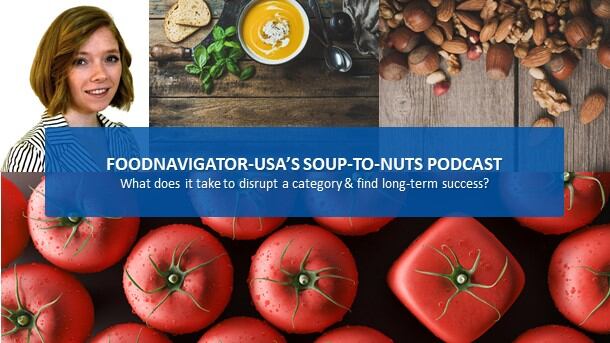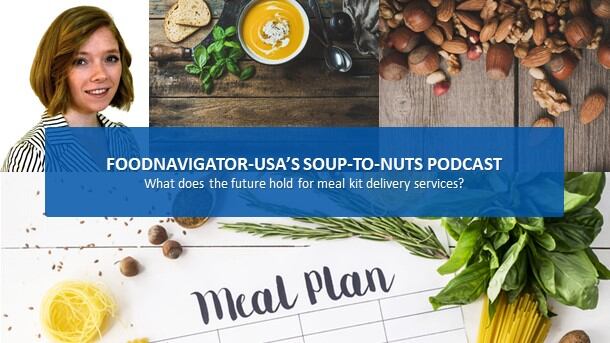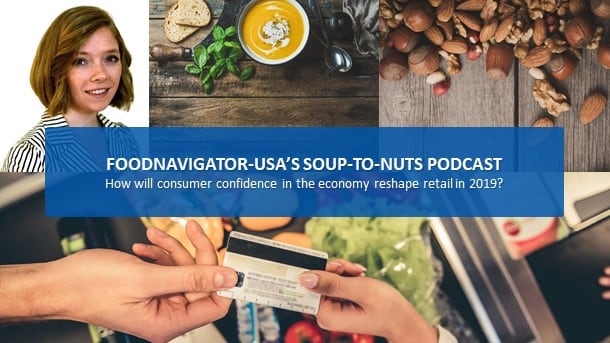On one level, faith that an innovation is groundbreaking will help push many entrepreneurs to take the first step and an infectious passion could help them gain initial traction, but when it comes to true disruption – and long-term success – innovation alone is not enough.
In this episode of FoodNavigator-USA’s Soup-To-Nuts podcast, industry veteran and the current CMO for the My/Mo Mochi Ice Cream Russell Barnett shares lessons he has learned from his experience helping breakout innovative brands, including popchips and Mike’s Hard, not only disrupt their categories but find long term success.
Step 1: Ensure the innovation is accessible to consumers
According to Barnett, the first key to category disruption and long-term success is to make an innovative idea or product accessible to the masses in a way that is open and inviting, rather than confusing or intimidating.
One way that Barnett made Mike’s Hard Lemonade accessible was by carefully thinking through the usage occasions and to ensure the name of the product quickly conveyed when and how to drink the beverage.
Brands also need to zero in on the information that consumers will care about – and excise the rest so that the messaging isn’t cluttered or overwhelming, Barnett said. He pointed to his experience at popchips, “which was a tremendous success but it started out very confusing when we first launched” because the brand communicated that the chip was made with a potato, corn and rice base – when all the consumer really cared about was that it was a better-for-you potato chip.
“Once we focused on the idea ... that it was better-for-you potato chip, that is where we were able to really accelerate,” because the brand no longer had to do the “heavy lifting in education” around extra information, he explained.
Barnett now is applying all these same principles and lessons learned about accessibility to My/Mo Mochi, which launched about three years ago as a snackable confection made from sweet rice dough wrapped around premium ice cream. As Barnett explains, the brand is expanding and constantly innovating to keep consumers engaged and to disrupt the novelty ice cream set.
“We sort of found that holy grail in frozen novelty space, which was ripe for innovation. Mochi ice cream has been around since the early ‘90s, but really didn’t take traction until folks like us came on the scene and said how do we make it accessible to the masses?” Barnett said. “We did that by keeping the weird, which in our case is dough and ice cream,” and replacing the unfamiliar Asian flavors with ones that Americans would recognize, including strawberry, chocolate and vanilla.
Three other successful strategies that Barnett has used to bring consumers around to new ideas is promoting the new product through social media campaigns that target first adopters or a group of people who would most benefit from the product, giving products away at small and medium sized events rather just in stores, and finally, by engaging a strong PR strategy.
Step 2: Ensure new products are available to the masses
In addition to being accessible, for a new product to disrupt a category, Barnett says, it also must be available to the masses through strategic distribution.
But not every retailer will be a good fit for a new product or idea, which is why Barnett says it is important for brands launching a new idea to consider more than just the number of doors a store can offer, but also take into account the extent to which a retailer will support and promote an innovative or unfamiliar product.
Traditionally, the natural channel was a natural fit for innovative and disruptive products to market, but Barnett says that this is no longer the only path for companies. Rather, more mainstream retailers are now willing to take a chance on new ideas in part out of a fear that they otherwise will be left behind.
Step 3: Remain open to revision
As companies build consumer awareness of and retail distribution for their innovation, Barnett says they need to remain open to feedback and be willing to expand or adjust the definition of their product if necessary to remain relevant or else risk becoming a passing fad.
“Consumers’ point of reference can change and that can be a massive driving piece. And when that happens you can’t [always] get out of the way quickly enough,” and so companies must “innovate the offering or just step away,” Barnett said.
At My/Mo Mochi Ice Cream this means expanding the line to both maximize on consumer desire for handheld snacks, but also making more traditional ice cream products, with the bits of mochi dough on the inside rather than the outside, he explained.
In addition to this deconstructed version, the brand expanded its handheld snacks with at triple layer mocha ice cream, such as the brand’s Chocolate Sundae flavor, which has a chocolate mochi dough around vanilla ice cream with a dab of cherry ice cream in the center, he said.
Reflecting on these innovation, Barnett encourages entrepreneurs and brands not to settle for simply innovating new flavors but to look for new platforms and experiences as well.
Step 4: Ride off into the sunset
With these strategies, Barnett says he believes that any category – no matter how sleepy – can be reawakened through disruptive innovation.
He says he also believes the future for My/Mo Mochi Ice Cream and the food space as a whole is bright.
He explains that My/Mo Mochi Ice Cream will continue to disrupt the novelty frozen dessert segment, but ultimately he sees the brand as a snack platform that could go well beyond this category.
As for the overall food segment, he said: “Innovation is here. Food is amazing. Food is joy. It is what you look for with your friends and I think the really successful folks are going to be able to figure out how to [navigate] that gap between food, function, taste and experience. That is where food and the big winners will be in the next five years.”




